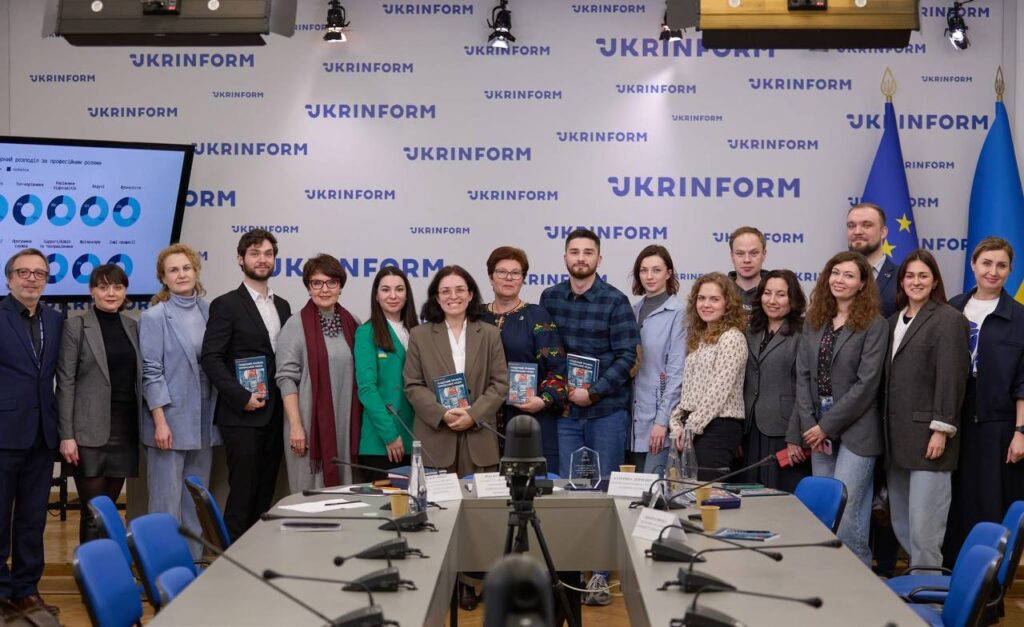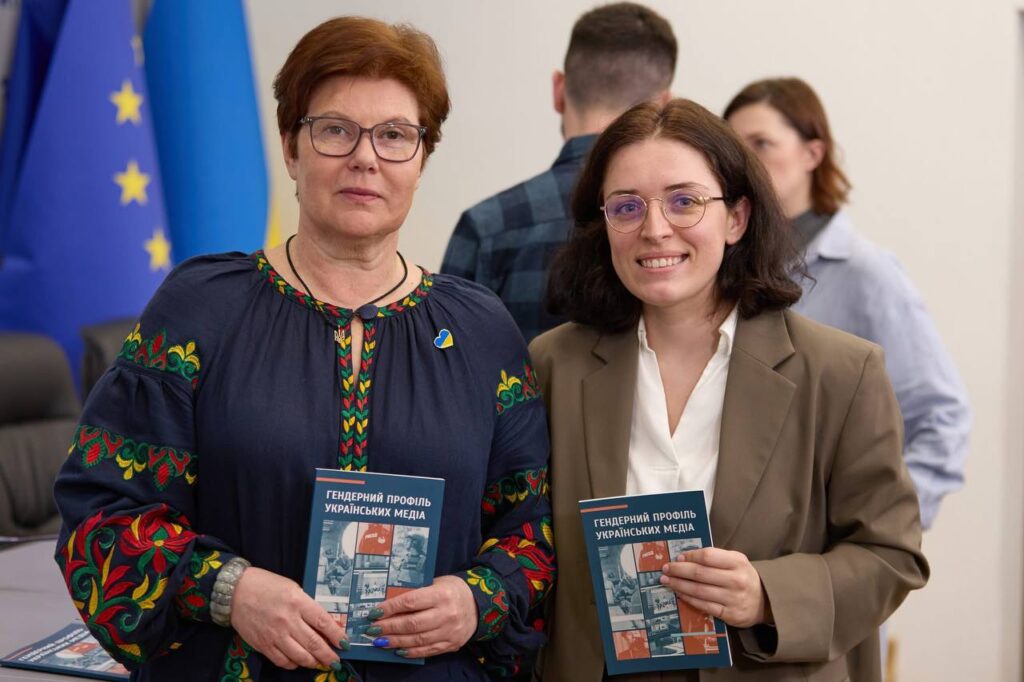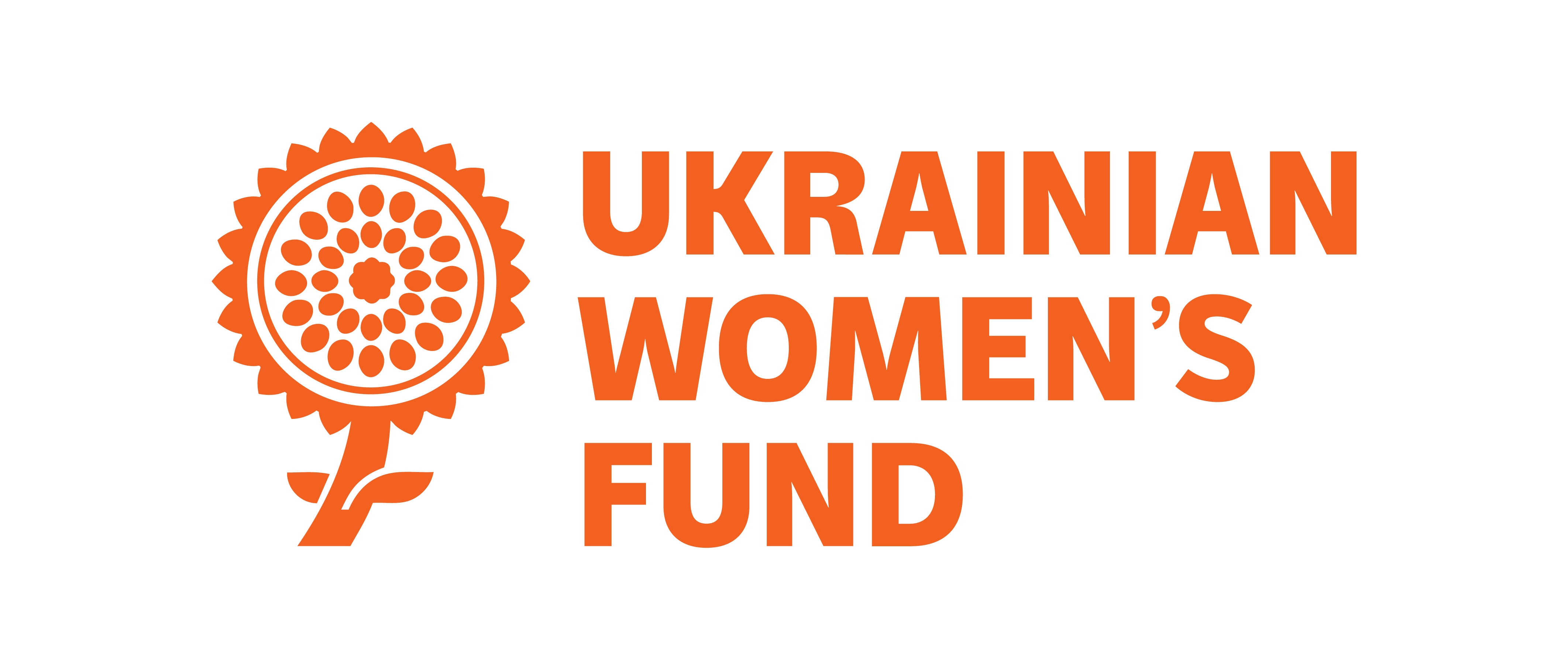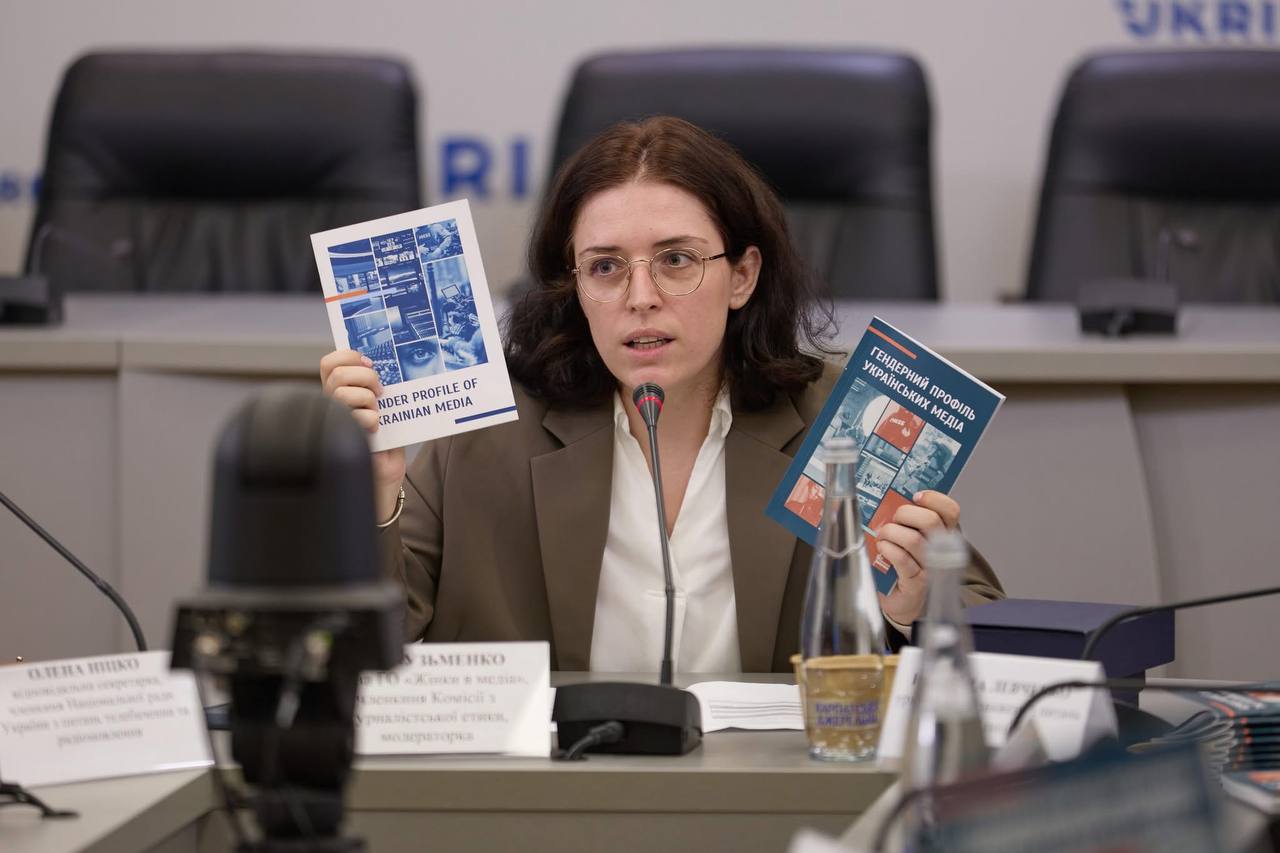In 2023, Lisa Kuzmenko visited the European Institute for Gender Equality in Lithuania and the Lithuanian National Radio and Television, a public broadcaster that implements a gender equality strategy.
The visit took place within the framework of the project “Network of gender think tanks: capacity development for advanced policy design, impact assessment, strategic advocacy, and specialised policy communications”, implemented by the Ukrainian Women’s Fund with the support of the European Union. The project’s host, the Centre for Equality Advancement (CEA), organised an intensive programme to share experiences in developing gender-sensitive policies, methods and tools for gender mainstreaming.
The methodology studied during the visit was later adapted to the Ukrainian context by the Women in the Media team and used in two large-scale projects: first, in the study “Gender Balance in Decision-Making by Ukrainian Media Organisations”, and then in a more in-depth analysis called “Gender Profile of Ukrainian Media”.
This study was implemented by the Women in the Media NGO in cooperation with the National Television and Radio Broadcasting Council of Ukraine, with the support of the Ukrainian Women’s Fund. As part of the project, nearly 500 questionnaires were collected from media outlets employing over 8,900 staff members.
 “In Lithuania, I was deeply impressed by their experience. But after returning home, I learned that here in Ukraine — in particular, at Suspilne — there is a Department of Equality and Diversity already working on a gender equality and inclusion strategy. While I was in Lithuania, it was hard to imagine this happening in Ukraine — and now it’s already underway. And this despite the fact that Lithuania is part of the EU and its public broadcaster receives substantial European funding,“ says Liza Kuzmenko.
“In Lithuania, I was deeply impressed by their experience. But after returning home, I learned that here in Ukraine — in particular, at Suspilne — there is a Department of Equality and Diversity already working on a gender equality and inclusion strategy. While I was in Lithuania, it was hard to imagine this happening in Ukraine — and now it’s already underway. And this despite the fact that Lithuania is part of the EU and its public broadcaster receives substantial European funding,“ says Liza Kuzmenko.
She notes that the war has accelerated the development of expertise: Ukrainian editorial offices are actively integrating gender sensitivity not only into their content but also into their internal policies — for example, by introducing the use of feminine forms in statutes or by creating a women experts database “Ask a Woman”.
“When we did the first study in 2023, the National Council had fewer powers, but when we were preparing the second one in 2024, the media regulator could already control both print and online media. This year we continued our work, and this will be the third gender profile. The research has become even more in-depth: we have added an intersectional approach – in particular, we asked about the experience of employing veterans and people with disabilities. We also analysed the regulatory practices in France, Germany, Belgium, Ireland, and Sweden,” explains Liza Kuzmenko.
A special emphasis in the study is placed on rethinking the role of the National Council as not only a controlling but also a partner body.
“The regulator can be an ally of the media in implementing equality policies rather than a ‘whip’,” emphasises Liza Kuzmenko.
Olga Gerasymiuk, the head of the National Council, has already been approached by colleagues from the Greek media regulator with a request to share Ukrainian research methods.
“Yes, we have commitments to European integration, such as the eradication of corruption, digitalisation, and the introduction of gender equality. These are the obligations of the state, but on the other hand, we see how society and editorial offices are ready for these changes. That is, these are not forced changes, but the way our values coincide with the European vision. It’s a win-win situation, where we can change ourselves, and at the same time, it fits well with our European integration commitments,” says Liza Kuzmenko.
 Kateryna Levchenko, the Government Commissioner for Gender Policy, emphasises:
Kateryna Levchenko, the Government Commissioner for Gender Policy, emphasises:
“The value of these studies lies in their practicality. These studies are conducted in cooperation with either the Ministry of Culture, the National Council, the Commission on Journalistic Ethics, or my Office. On the one hand, this shows a partnership between NGOs and government agencies. And on the other hand, it shows that these studies do not just remain on the Internet, but that they are used by the government agencies that support them. The research provides validated data, allows us to track the dynamics, and is the basis for government decisions – from guidelines to policies. This is a classic of advocacy: when civil society influences changes in the state through facts. And the fact that the study has been conducted more than once enables to compare the situation and monitor changes. And these studies highly relevant for all recovery processes.“
The implementation of the “Gender Profile of Ukrainian Media” study was another step toward driving real change within Ukraine’s media landscape. The collaboration between the Women in the Media NGO and the National Television and Radio Broadcasting Council of Ukraine, supported by the Ukrainian Women’s Fund, demonstrates how partnerships between civil society, state institutions, and international support can not only analyse the current situation but also influence the development of policies that reshape approaches to equality and inclusivity in Ukrainian media.
The material was produced in framework of the Action “Network of gender think tanks: capacity development for advanced policy design, impact assessment, strategic advocacy, and specialized policy communications” implemented by the Ukrainian Women’s Fund with the support of the European Union. Contents of the publication are the sole responsibility of UWF.

